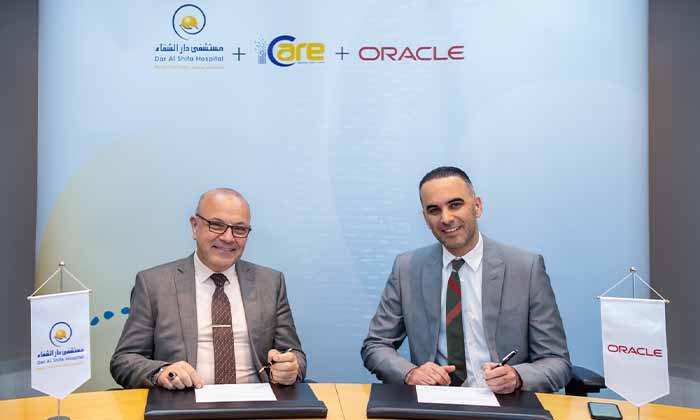Rackspace Technology, a leading end-to-end multicloud technology solutions company, today announced the results of a new global survey, conducted in association with Google Cloud, of 1,400+ IT executives, Future of Compute, that highlights the increasingly rapid pace of cloud adoption. According to the survey, the question is no longer whether organizations should migrate to the cloud, but how they can leverage the cloud for innovation, efficiency, and growth. Global respondents for the survey include executives includes Singapore, USA, Australia, India, UK, Germany, Mexico, Colombia, Netherlands and Middle East.
According to the survey More than half (51%) of all survey respondents said that 100% of their applicable infrastructure now resides in the cloud, while (49%) said they plan to move more of their workloads into the cloud as possible. In addition, more than two thirds of respondent’s compute workloads are now supported by public cloud, colocation, and managed hosting services. At the same time, IT infrastructure spread has reached an equilibrium and leaders expect it to hold steady over the next three to five years.
Moreover, a vast majority of respondents agree that cloud services enable greater innovation across all aspects of the enterprise. However, when asked about reasons preventing organisations from leveraging more benefits from the public cloud, more than half (55%) of the respondents in India indicated security reasons, while 56% specified data privacy reasons.
Underscoring the increasingly central role that technology is playing in transforming operations, more than a third (35%) of respondents say IT executives play a key role in driving the direction of the company, as silos between functional areas continue to dissolve.
“Driven in large part by the power of the cloud, today’s technology landscape is evolving at a breakneck pace, while IT is penetrating all areas of the organization,” said Jeff DeVerter, Chief Technology Evangelist at Rackspace Technology. “In this environment, IT leaders have the power to help companies and organizations see around corners to solve both their short-term and long-term business challenges and provide critical guidance in the areas of business growth, security, efficiency, and customer experience.”
“In addition to adopting tech solutions, it is essential to build efficient collaborative partnerships. With investments on cloud implementation and cyber-security surging steadily, Government CIOs are strategising IT spending plans with a focus on deriving core value and impact from the technology. This requires cloud adoption in organisations, to go beyond initial implementation towards an outcome-based futuristic direction. It also demands for IT technology/ service providers to collaborate and partner with all stakeholders in order to achieve their mission-critical priorities seamlessly,” said Sandeep Bhargava, Managing Director, Asia Pacific and Japan, Rackspace Technology.
Rapid Cloud Growth, Use of Containerized Applications Increase
The cloud market grew 23% to $323.3 billion over the past year, according to Gartner, who projects a future growth rate of 18% annually. Accordingly, most respondents say they are already enjoying the benefits of a public cloud (63%) and/or a private cloud (66%). In addition, public cloud investments represent as much as 40% of most IT budgets, with private clouds at 30%.
Containerized applications are also continuing to grow in popularity as organizations shift away from on-site data centers. The most common tactic among organizations (85%) employing public cloud remains “lifting and shifting” using cloud based VMs (virtual machines), but 84% of respondents say they are investing in public cloud with containers. 62% of respondents say their use of containerized applications will increase in the next two years.
Future Cloud Directions
The cloud revolution brought an influx of advancements to the world of compute; however, the past decade of inundation is settling into a more level pool of opportunity. Over the next 12 months, respondents anticipate their infrastructure spending will include on-site data centers (62%), managed hosting (65%), public cloud (61%), and colocation (29%). However, 60% of respondents also said they envision not owning a data center in the next five years.
Data centres are not necessarily going away – but corporate owned and managed centers are likely to disappear. Around 54% say legacy apps are the main factor keeping them from abandoning data centres.”
Security, data privacy and control understandably remain as top concerns among IT leaders, particularly for public cloud use cases. While these concerns present valid obstacles to getting more companies fully reaping the benefits of the cloud, the reality is that heterogenous multicloud infrastructure is proving to be the norm. Companies that focus their resources on successfully addressing security and data privacy concerns while innovating with cloud can expect to achieve a significant competitive advantage.
Survey Methodology
Commissioned by Rackspace Technology and Google Cloud, the survey was conducted by Coleman Parkers Research between July 8 – 30, 2021, the survey is based on the responses of 1,420 IT decision-makers across manufacturing, digital native/technology, financial services, retail, government/public sector, and healthcare sectors in the Americas, Europe, Asia and the Middle East. The survey questions the leading factors determining IT infrastructure.















